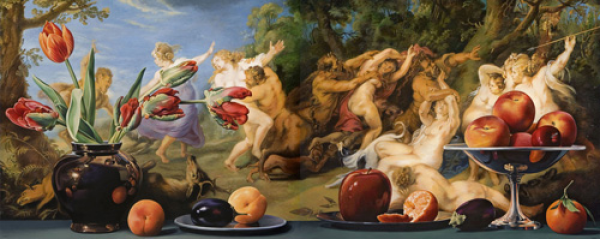AH231 - Art in the Global Early Modern Era
This course examines art produced in the Early Modern era (roughly 1450-1800) across a global range of nations and societies. The Early Modern period encompasses a time of cataclysmic social, religious, scientific and technological change, enhanced by new international commercial and information networks, disparate economic and religious systems, constant political and military conflicts, widespread oppression and genocide, and the rise of radical intellectual and artistic movements. The course incorporates case studies in a wide range of art and cultures (such as Chinese, Persian, Ottoman, African, European, and Central and South American art). Topics for investigation include how art, artists, patrons, and audiences in these historical empires interrogated notions of reality; cosmologies and planetarity; ancient canons; religious devotion; eroticism and death; individualism and issues of class, status, gender, and race; politics and power; and the role of the artist, among others. The course presents art in a comparative transnational and cross-cultural context, while also interrogating larger (art)historical frameworks of colonialism, modernity, markets, and Eurocentricity. Meets the Critical Learning: AIM requirement. Meets the Critical Learning: HP requirement. Meets the Writing in the Discipline requirement. (Not offered 2025-26).
Degree requirement — Critical Learning: AIM, Critical Learning: HP, Writing in the Discipline
1 unit
Previously Featured Offering

This class examines the innovative art and architecture made for the major courts of 17th-century Europe. In this century of remarkably varied artistic production, paradoxes abounded. Illusion competed with classicism; seriousness of purpose gave way to painted jokes; and artistic identity clashed with political authority. More than ever before, artists explored the dramatic and expressive possibilities of art in this turbulent period. Like today’s artists, Baroque masters struggled to identify and convey a heightened awareness of the complex relationship of an individual to a multivalent reality that resists concrete definition.
The students in AH231 will not only study the art history of the 17th century, but also work on a show entitled “Strange Beauty: Baroque Sensibilities in Contemporary Art” which will open in the IDEA Space on December 6. The exhibition features works by contemporary artists such as Jimmy Baker, Liza Lou, Andres Serrano, Cindy Sherman, Kehinde Wiley, and Sherrie Wolf. With these objects, which uncover connections between Baroque and contemporary experience, students will enter the dynamic territory of museum studies. Their task, simply put, is to make the living legacy of art history in contemporary art understandable, and vital, to today’s viewing public.
No offerings are currently scheduled.



